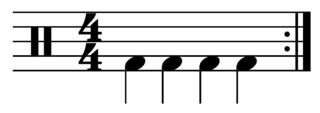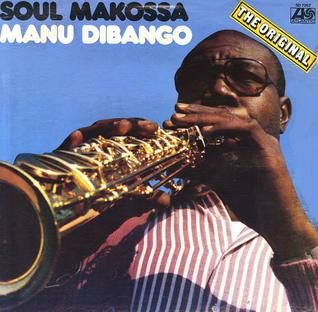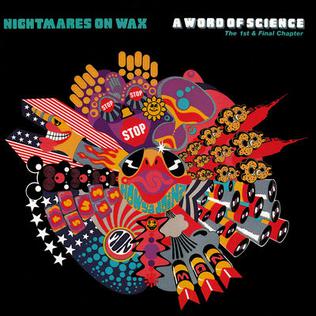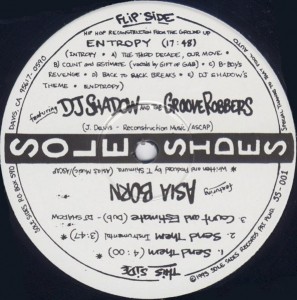
Disco is a genre of dance music and a subculture that emerged in the 1970s from the United States' urban nightlife scene. Its sound is typified by four-on-the-floor beats, syncopated basslines, string sections, brass and horns, electric piano, synthesizers, and electric rhythm guitars.
House is a genre of electronic dance music characterized by a repetitive four-on-the-floor beat and a typical tempo of 120-130 beats per minute as a re-emergence of 1970s disco. It originated in the Black queer community in Chicago. It was created by DJs and music producers from Chicago's underground club culture and evolved slowly in the early/mid 1980s as DJs began altering disco songs to give them a more mechanical beat. By early 1988, House became mainstream and supplanted the typical 80s music beat.
The new school of hip hop was a movement in hip hop music, beginning in 1983–84 with the early records of Run–D.M.C., Whodini, and LL Cool J. Predominantly from Queens and Brooklyn, it was characterized by drum machine-led minimalism, often tinged with elements of rock; rapped taunts, boasts, and socio-political commentary; and aggressive, self-assertive delivery. In song and image, its artists projected a tough, cool, street b-boy attitude. These elements contrasted sharply with funk and disco, novelty hits, live bands, synthesizers, and party rhymes of artists prevalent in the early 1980s. Compared to their older hip hop counterparts, new school artists crafted more cohesive LPs and shorter songs more amenable to airplay. By 1986, their releases began to establish hip hop in the mainstream.

Uncle Jam Wants You is a concept album by American funk rock band Funkadelic. It was released by Warner Bros. Records in 1979, and was later reissued on CD by Priority Records. It was produced by George Clinton under the alias Dr. Funkenstein. It is the first Funkadelic album since America Eats Its Young in 1972 not to sport a cover illustrated by Funkadelic artist Pedro Bell, though Bell did provide artwork for the album’s back cover and interior. Uncle Jam Wants You was the second Funkadelic album to be certified gold. The album peaked at No. 18 on the Billboard 200 and No. 2 on the Billboard Top R&B/Hip-Hop Albums chart.
Chicago house refers to house music produced during the mid to late 1980s within Chicago. The term is generally used to refer to the original house music DJs and producers from the area, such as Ron Hardy and Phuture.
Electro is a genre of electronic music and early hip hop directly influenced by the use of the Roland TR-808 drum machines and funk. Records in the genre typically feature heavy electronic sounds, usually without vocals; if vocals are present, they are delivered in a deadpan manner, often through electronic distortion such as vocoding and talkboxing. It palpably deviates from its predecessor boogie by being less vocal-oriented and more focused on electronic beats produced by drum machines.
Hi-NRG is a genre of uptempo disco or electronic dance music (EDM) that originated in the United States during the late 1970s and early 1980s.
In popular music, a break is an instrumental or percussion section during a song derived from or related to stop-time – being a "break" from the main parts of the song or piece. A break is usually interpolated between sections of a song, to provide a sense of anticipation, signal the start of a new section, or create variety in the arrangement.

Four-on-the-floor is a rhythm used primarily in dance genres such as disco and electronic dance music. It is a steady, uniformly accented beat in 4
4 time in which the bass drum is hit on every beat . This was popularized in the disco music of the 1970s and the term four-on-the-floor was widely used in that era, since the beat was played with the pedal-operated, drum-kit bass drum.

Critical Beatdown is the debut studio album by American hip hop group Ultramagnetic MCs, released on October 4, 1988, by Next Plateau Records. Production for the album was handled primarily by the group's rapper and producer Ced-Gee, who employed an E-mu SP-1200 sampler as the album's main instrument. Music journalists have noted the album for its innovative production, funk-based samples, self-assertive themes, and clever lyrical rhymes by Ced-Gee and rapper Kool Keith.
Walter Gibbons was an American record producer, early disco DJ, and remixer. He helped pioneer the remix and 12" single in America, and was among the most influential New York DJs of the 1970s.

"Soul Makossa" is a song by Cameroonian saxophonist and songwriter Manu Dibango, released as a single in 1972. It is the most sampled African song in history. The song was originally recorded as the B-side for "Hymne de la 8e Coupe d'Afrique des Nations", a song celebrating the Cameroon national football team's accession to the quarterfinals of the Africa Cup of Nations football tournament, as well as Cameroon's hosting the games for the first time; the lyrics were written by Cameroonian poet and musicologist S.M. Eno Belinga. Except for some words in English, it was written in Duala, a native dialect continuum from Cameroon. Manu Dibango later recorded a new version for his 1994 album Wakafrika, titled "Mouvement Ewondo".

Modulations: Cinema for the Ear is 1998 documentary film on the history of electronic music, consisting of a documentary film, accompanied by a soundtrack album, and a 2000 book Modulations A History of Electronic Music by Peter Shapiro. The project was directed by Iara Lee, the maker of the documentary film Synthetic Pleasures.

A Word of Science is the debut studio album by British electronic producers Nightmares on Wax. Released by Warp Records in September 1991, it is the act's only album as a group before it became a solo vehicle for George Evelyn. Evelyn nonetheless recorded and produced the album alone, incorporating samples and elements from demo tapes he made in the late 1980s. Although Nightmares on Wax debuted with two well-received techno singles in 1989-1990, A Word of Science is eclectic and largely moves the act towards a more mellow style influenced by funk, soul and hip hop, while still incorporating techno and house styles.

Acid house is a subgenre of house music developed around the mid-1980s by DJs from Chicago. The style is defined primarily by the squelching sounds and basslines of the Roland TB-303 electronic bass synthesizer-sequencer, an innovation attributed to Chicago artists Phuture and Sleezy D circa 1986.
Boogie is a rhythm and blues genre of electronic dance music with close ties to the post-disco style, that first emerged in the United States during the late 1970s to mid-1980s. The sound of boogie is defined by bridging acoustic and electronic musical instruments with emphasis on vocals and miscellaneous effects. It later evolved into electro and house music.

"Send Them/Entropy ", is a double A side EP by Asia Born and DJ Shadow and the Groove Robbers. This was released 1993 from Solesides. Parts of this were later featured on the retrospective album Solesides Greatest Bumps.

"Sucker M.C.'s" is a song by American hip hop group Run-D.M.C. It was first released in 1983 as B-side to "It's Like That". The two-sided release marked the start of Run-D.M.C.'s career as their first single, and it is widely regarded as ushering in a new school of hip hop artists with a street image and an abrasive, minimalist sound that marked them out from their predecessors. Both tracks were collected on the trio's self-titled debut album in 1984. WBAU was the first station to play the two songs.

Modulations: A History of Electronic Music: Throbbing Words on Sound is a 2000 book edited by Peter Shapiro. It is a companion piece to the documentary film Modulations: Cinema for the Ear.

The Best of Enjoy! Records is a 1989 compilation album of early hip hop music released by the Enjoy! Records music label. The album was part of a series of compilation albums from Hot Records covering various releases from American and British independent music labels. Retrospective reviews of the album from The Rough Guide to Hip-Hop and Spin and the Oakland Tribune as containing some of the best music of early hip hop.











